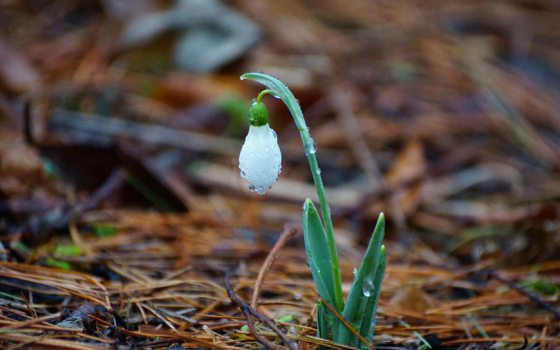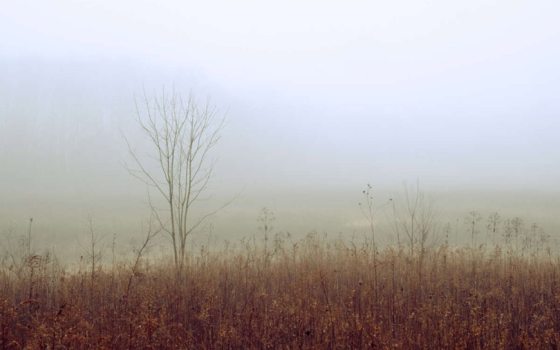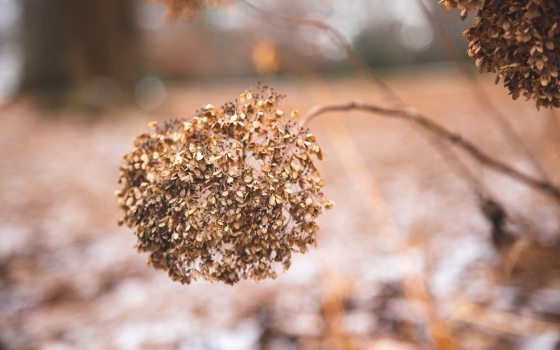Winter brings quietness to the landscape compared to summer when the garden pulses in heat and humidity. The stark beauty of trees, shrubs, and perennials against the winter sky creates space and highlights details that are often overlooked in the lushness of summer. Wintertime allows the clear details of the garden to come forward and highlights the harmony that a garden builds with its surrounding landscape. The clear light of winter enhances the finer details of the outdoor landscape, from deciduous trees holding onto their late winter leaves to the brown-toned structures of summer-flowering perennials set against a blue winter sky.
Now that we are in February, we find that our surprisingly warm winter has led to early patches of color dotting the landscape. Witch-hazels in full bloom of oranges and yellows fill the air with spicy scent.

We can now admire the swelling buds of Cornus mas (Cornelian-cherry), which reminds me or another spring-blooming perennial that is blooming early: Eranthis hyemalis (winter-aconite). Its yellow flowers are pushing up from the ground and sitting elegantly atop lacey green tutus throughout the Gardens. This chorus of ballerinas on the woodland floor is perfected by swaths of snowdrops pirouetting nearby.

Meanwhile, the russets and ochres of dormant perennials complement the rich, saturated greens of rhododendrons and hollies, which also provide red or yellow berries for seasonal interest and welcome food for our over-wintering birds. Consider the native rhododendron. These clever plants function as a thermometer, responding to extremely cold temperatures by rolling up their evergreen leaves to reduce the amount of leaf surface exposed to cold elements … an action that also naturally reduces water loss by transpiration during the winter months.
Bark is an remarkable element of the winter garden … the shedding of leaves exposes the variety of hues and textures of the trees throughout the Gardens, and the sight of sunlight hitting the bark at just the right time and just the right angle is simply spectacular. The graceful silhouette of Ulmus parvifolia (Chinese elm), for one, catches your eye from Flower Garden Drive and beckons you to examine it closely and discover its mottled russet bark. The bark of Chamaecyparis obtusa (hinoki false cypress) adds a swath of red to the subtle winter landscape.
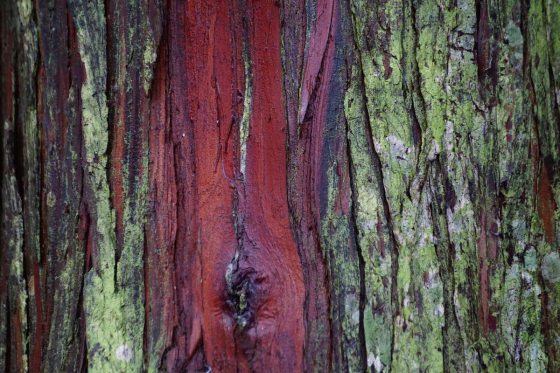
You can further embrace the beauty of the winter season by appreciating the dwindling beauty of summers gone by. These remnant stems, seed heads, and grasses create lofty texture in the landscape, with plenty to see now in the Meadow Garden.
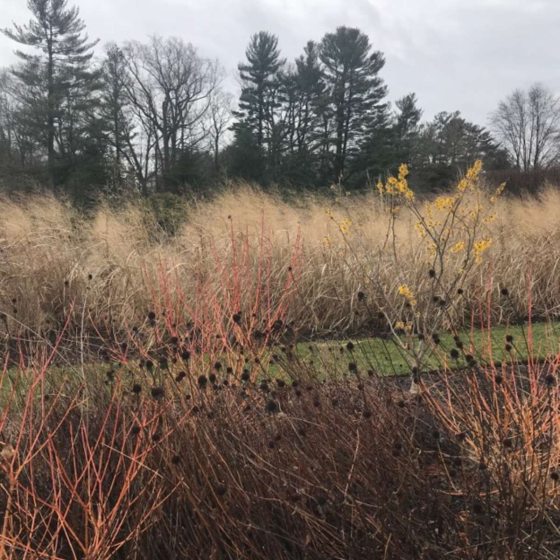
Now is the time to enjoy this fleeting sight before the young shoots of spring bulbs signal to our horticulturists that it’s time to cut back the perennials that followed us into winter, in preparation for a new cycle to begin in spring.
